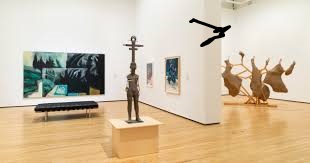Art can be created through struggle and museums help to make these tough but strong stories visible. Numerous works are representative of struggles to achieve freedom, arguments against injustice, or perseverance of groups in the face of adversity. One work can exemplify the social plight in a way that cannot be found in history books. Thus, a Renaissance portrait can show the strength and influence of the person represented, whereas a contemporary installation can provoke the modern world to reconsider technology, politics, or identity. When museums display these works side by side they foster centuries of communication that prompts the viewer to consider how past struggles still inform our current reality.
The Museum as a Living Book
Combined, the tales in an art museum become greater than the sum of individual parts: they constitute a living book. This book is not written like any other because it is written in colors, textures, shapes, and sounds. Every exhibition is a fresh start, every viewer interprets it in a different way depending on his or her background and outlook. Museums are inexhaustibly intriguing with this dynamic storytelling. There is never a similarity in two visits, the meaning of a story may change with each person reading it and when in their life. Through this, art museums demonstrate that the story is not fixed or lifeless but rather dynamic, living and breathing, a communication between the artist and the viewer.
Relate the Past to the Present.
The capability of art museums to serve as the intermediaries between various epochs is one of the most impressive attributes of art museums. They unite centuries of creations and visitors can observe the evolution of art over the years. Old objects, fragile papers and eternal sculptures rest next to today loud works of art and this is what makes the past and today live side by side in balance. This distinctive structure leads us to understand that times may change, technologies may change, materials may change, societies may change, but the human desire to express, communicate, and create has never changed. Thus, museums emerge as the location where history shakes hands with modernity to remind us of the continuity of human imagination.
The Timeless Language of Art
Art museums teach us that creativity is the language of the world and it will never age. A Renaissance painting brushwork, several centuries earlier than the digital patterns of today, also conveys feelings to the present-day audience that can be related to. Tourists tend to learn that concepts, questions, and fantasies of history are not much different to those of the present time. This is what makes art timeless, because people can relate to the past personally, they know that what people convey with their hands is not limited by time but it still resonates through time.

A Generation of Ideas.
Art museums generate some of the strongest intergenerational conversations by placing older works in proximity to contemporary works. As an example, the visitor can observe the way old geometrical patterns motivate modern architects, or how the motifs of love, faith, and identity can be traced both in the world of classical sculpture and in the world of modern photography. This mixing persuades the audience that each generation is borrowing the previous one, with new layers of meaning and style. This way art museums create a sense of unity, demonstrating that current artists are merely a small part of a much broader dialogue that has been going on long before they and that will persist into the future.